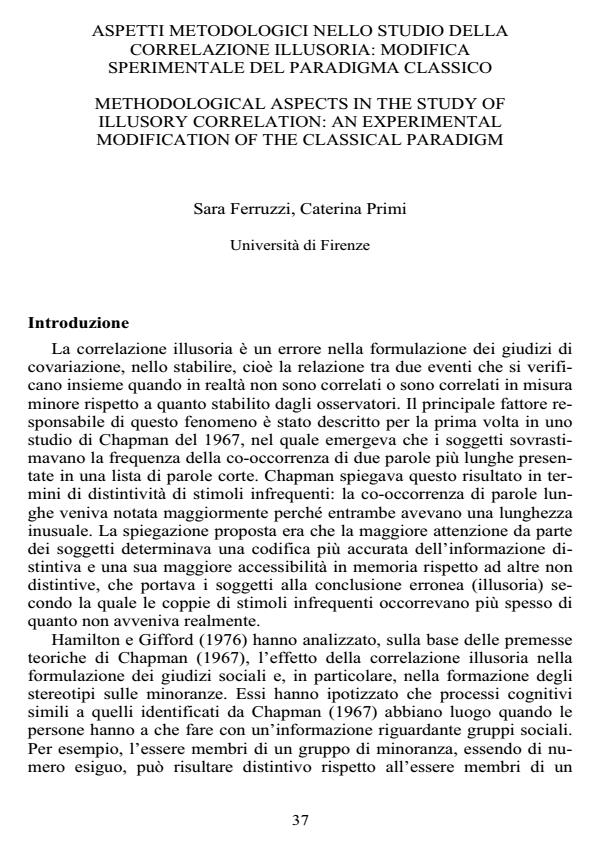Aspetti metodologici nello studio della correlazione illusoria: modifica sperimentale del paradigma classico
Titolo Rivista RICERCHE DI PSICOLOGIA
Autori/Curatori Sara Ferruzzi, Caterina Primi
Anno di pubblicazione 2007 Fascicolo 2007/1
Lingua Italiano Numero pagine 22 P. 37-58 Dimensione file 105 KB
DOI
Il DOI è il codice a barre della proprietà intellettuale: per saperne di più
clicca qui
Qui sotto puoi vedere in anteprima la prima pagina di questo articolo.
Se questo articolo ti interessa, lo puoi acquistare (e scaricare in formato pdf) seguendo le facili indicazioni per acquistare il download credit. Acquista Download Credits per scaricare questo Articolo in formato PDF

FrancoAngeli è membro della Publishers International Linking Association, Inc (PILA)associazione indipendente e non profit per facilitare (attraverso i servizi tecnologici implementati da CrossRef.org) l’accesso degli studiosi ai contenuti digitali nelle pubblicazioni professionali e scientifiche
Introduction. Illusory correlation effect has traditionally been interpreted as an information processing bias arising from the greater attention paid to the infrequent and thus distinctive co-occurrences (Hamilton & Gifford, 1976). An alternative account has shown that illusory correlation can arise from a process of category differentiation which builds on actual contrasts in the stimuli (McGarty, Haslam, Turner & Oakes, 1993). The present study investigated both the possibility that illusory correlation effect occurs when no stimulus information linking behaviours to groups (no label condition) was presented (an outcome inconsistent with the distinctiveness-based account) and the effect of the same instructions with standard stimulus information (label condition). Method. Subjects (191 secondary high school students) were presented with a list of positive and negative behaviours performed by two groups: in label condition the items were identified by group labels (Pines and Firs), while in no label condition the group labels were omitted. Subjects performed three tasks: cued recall, group evaluation and frequency estimates. The two conditions (label/no-label) were subdivided in three sets on the basis of an additional information about the distribution of the items which was presented in the instructions. Results. The experiment has produced illusory correlation effect in the label condition control set (confirming distinctiveness-based account) and in both conditions when additional information referred to an evaluative feature of majority group. The category differentiation account was partially confirmed. The different role of additional information and the constraints of the classical paradigm of illusory correlation were discussed.
Sara Ferruzzi, Caterina Primi, Aspetti metodologici nello studio della correlazione illusoria: modifica sperimentale del paradigma classico in "RICERCHE DI PSICOLOGIA " 1/2007, pp 37-58, DOI: